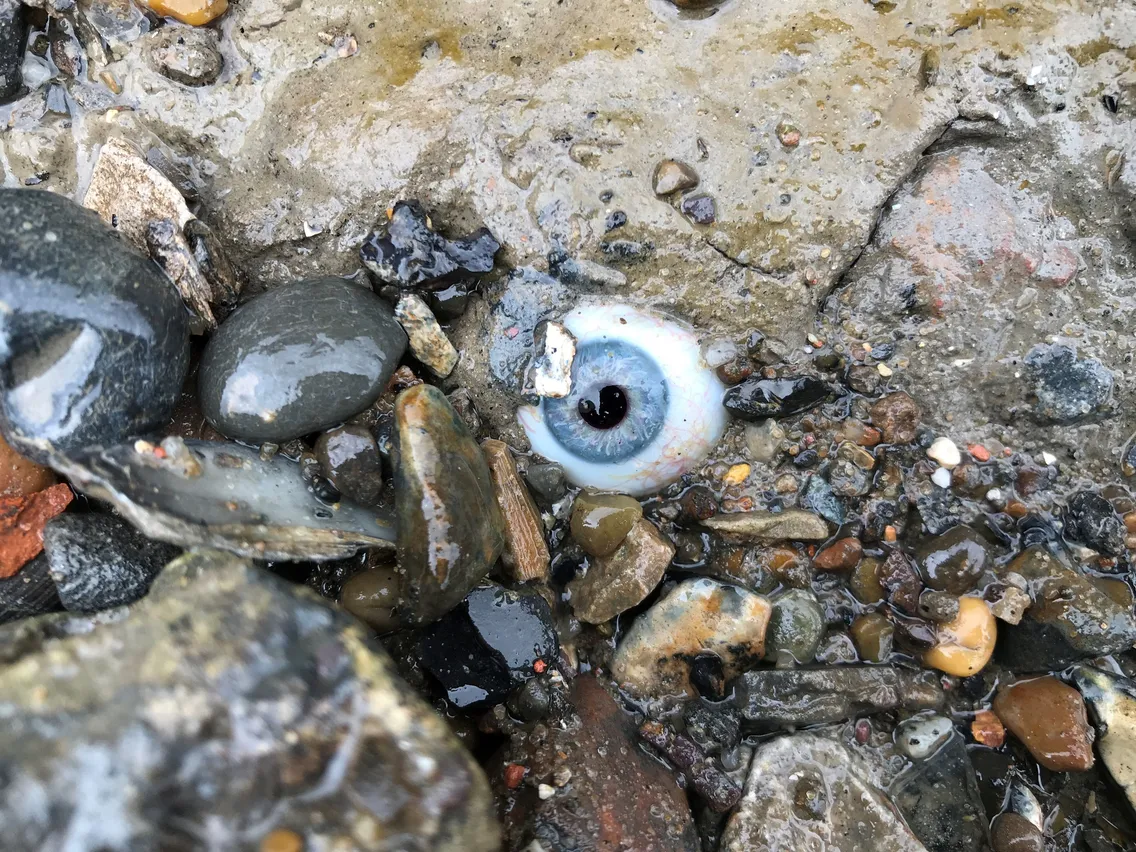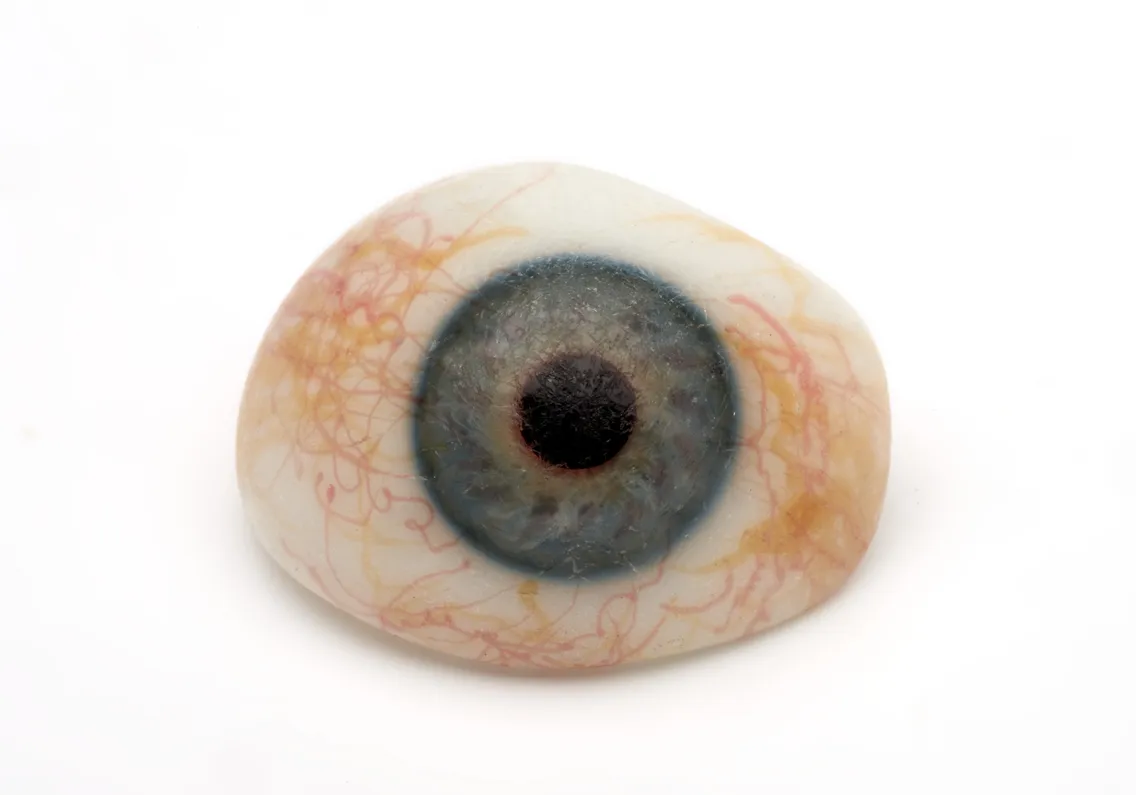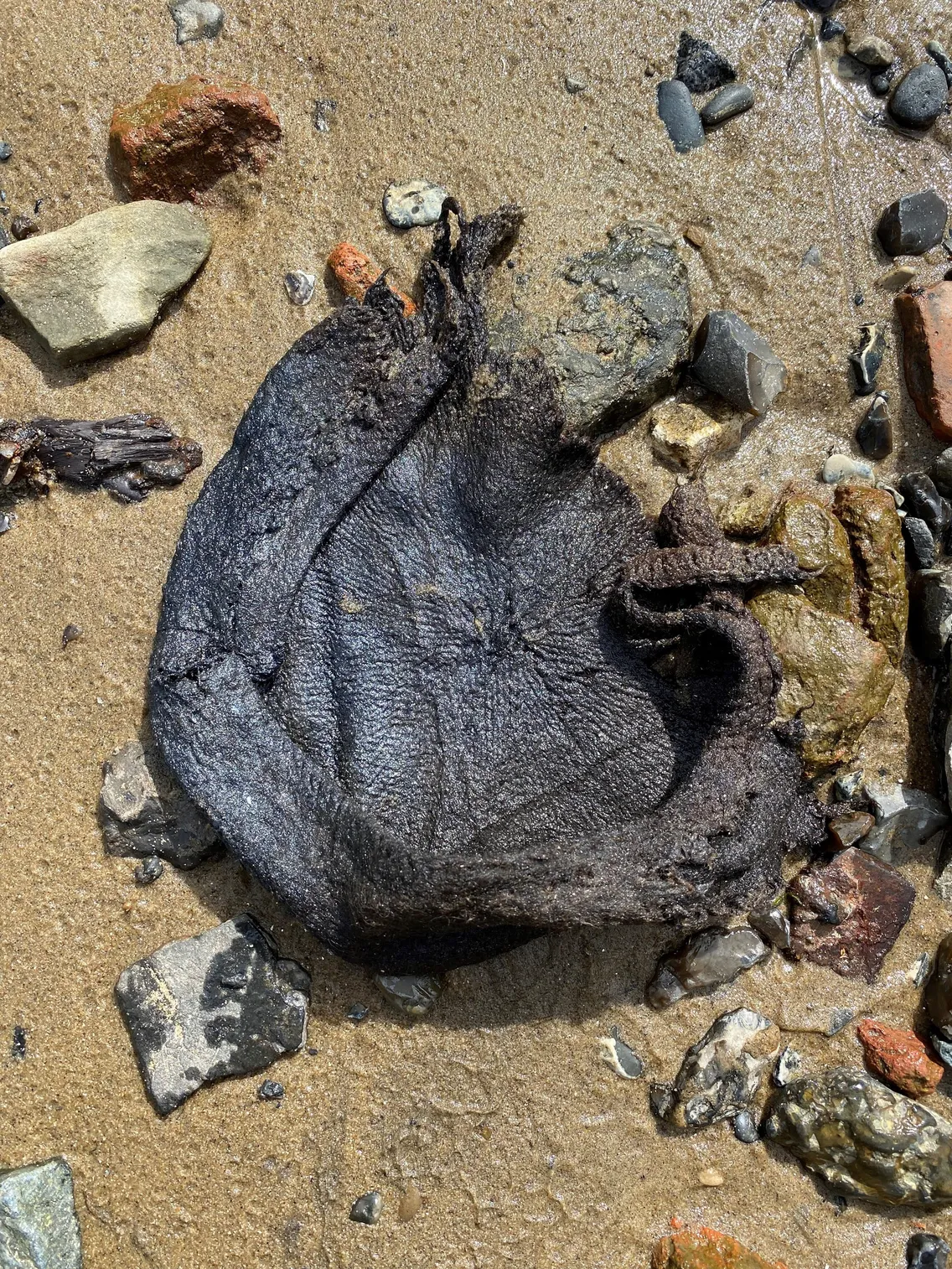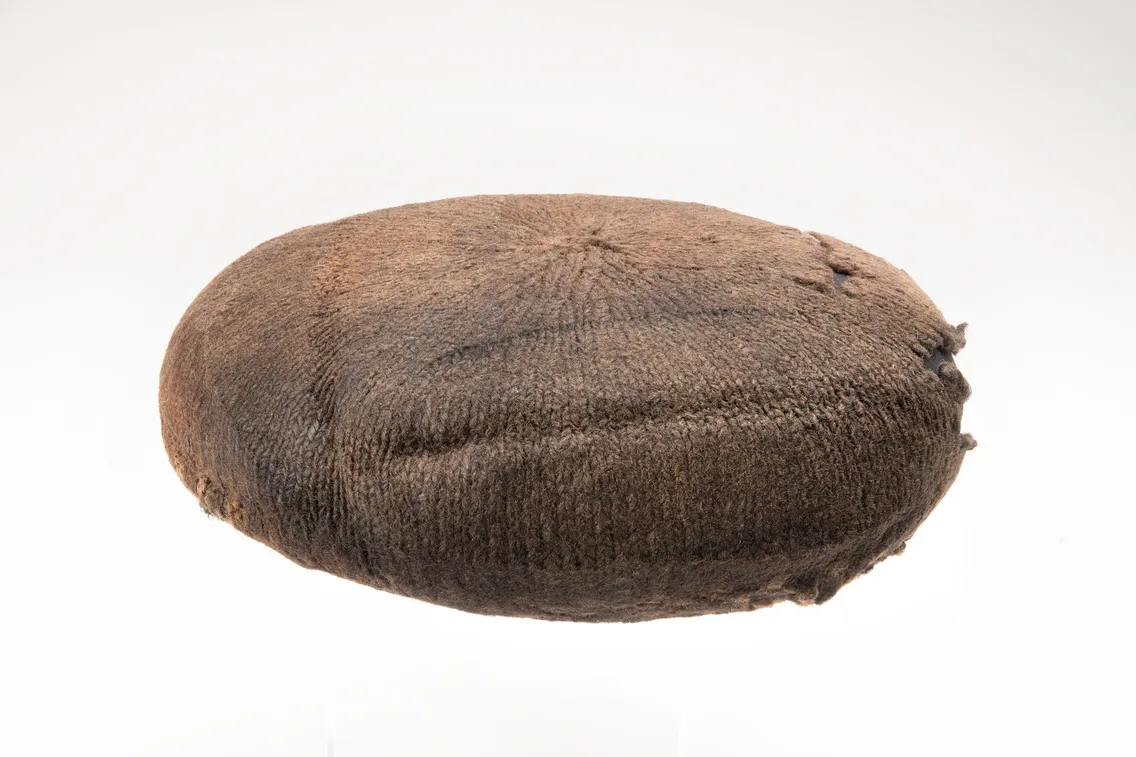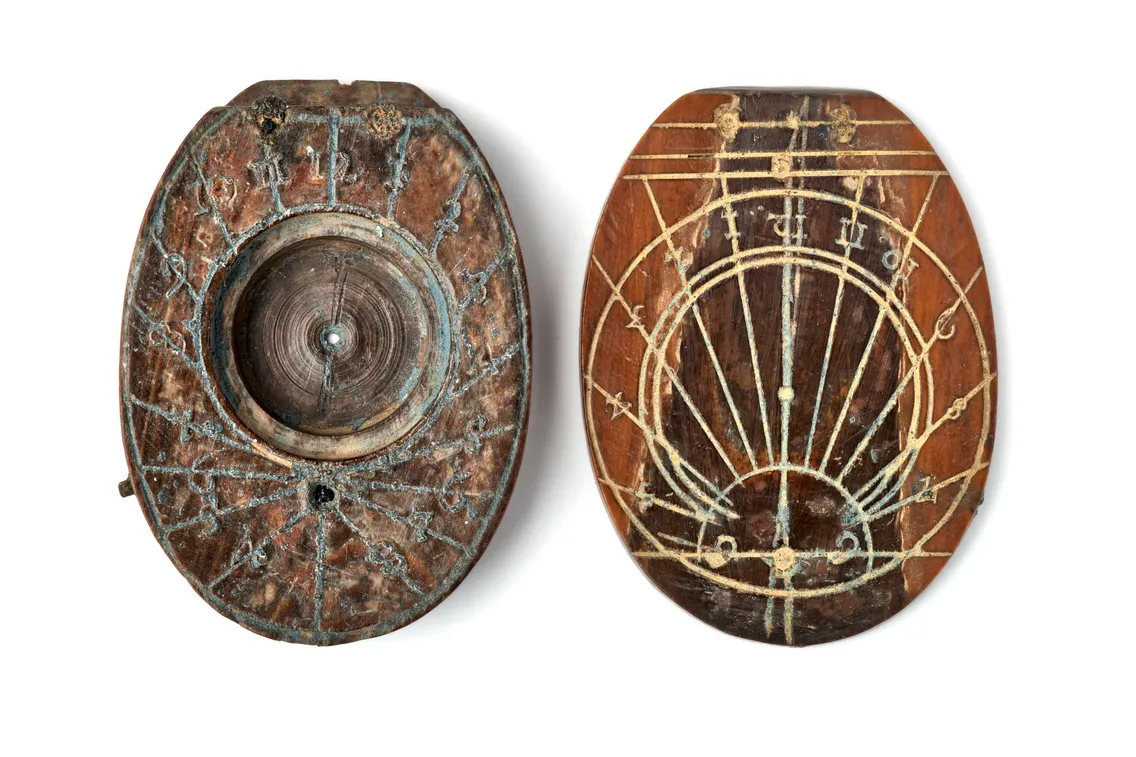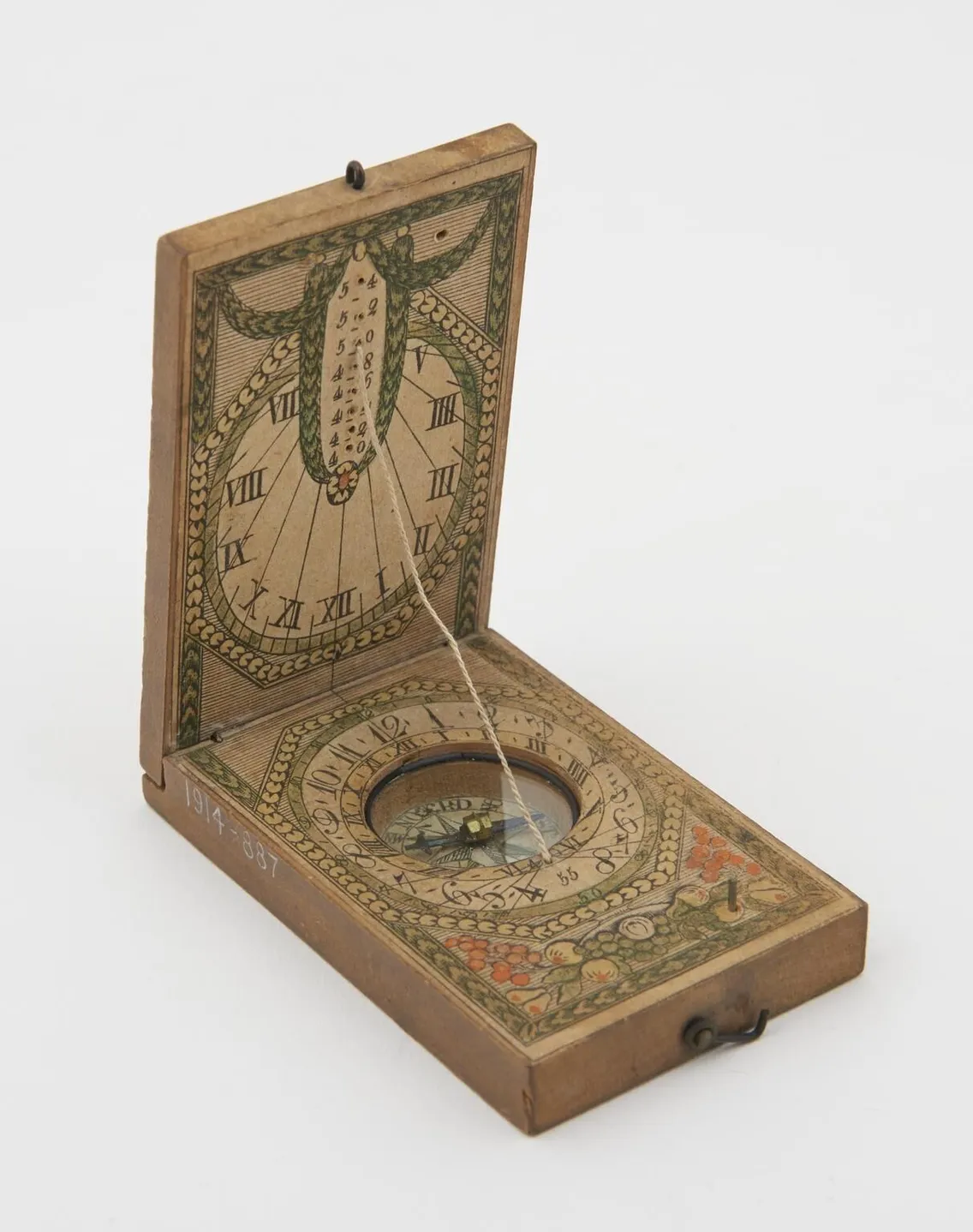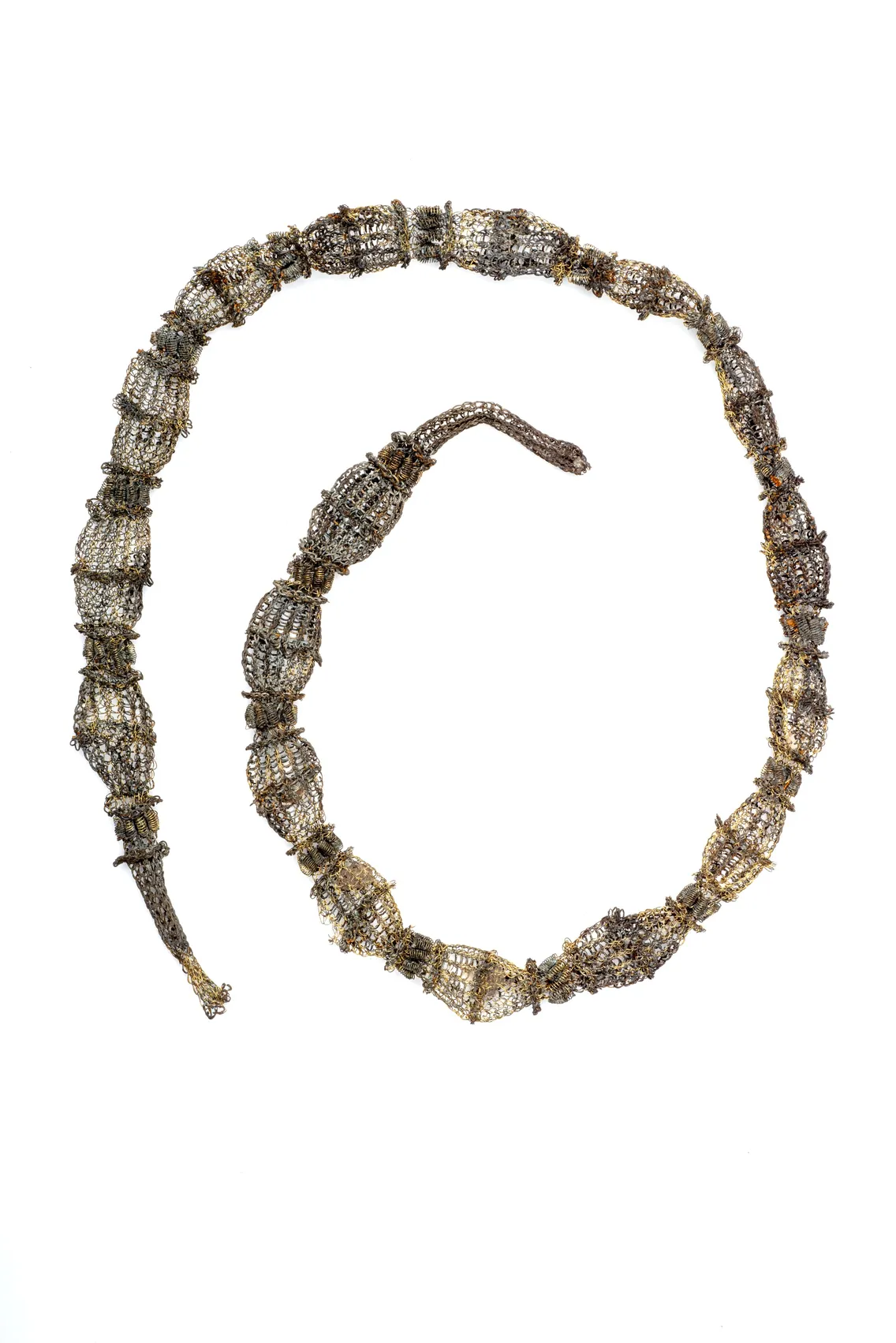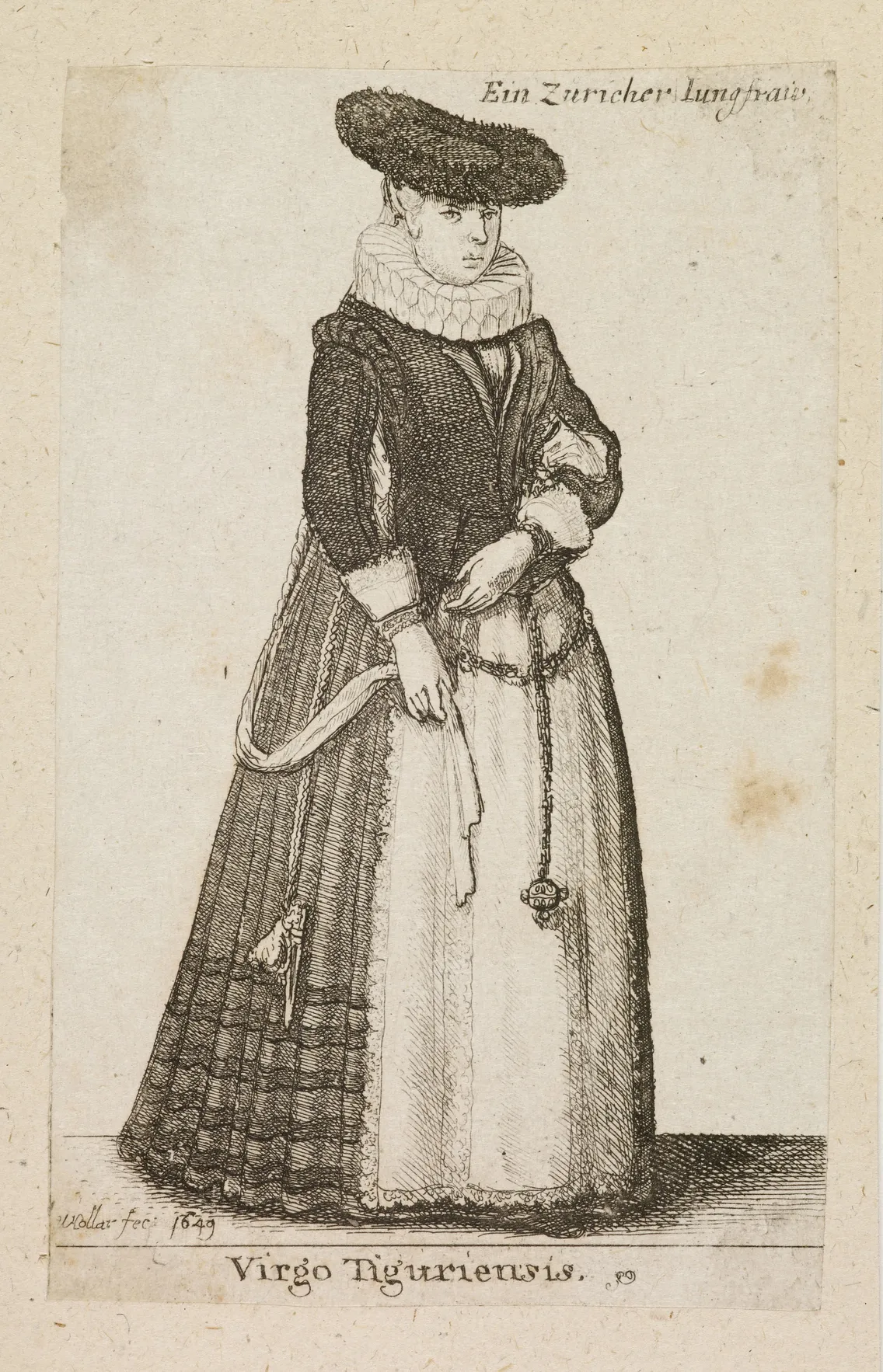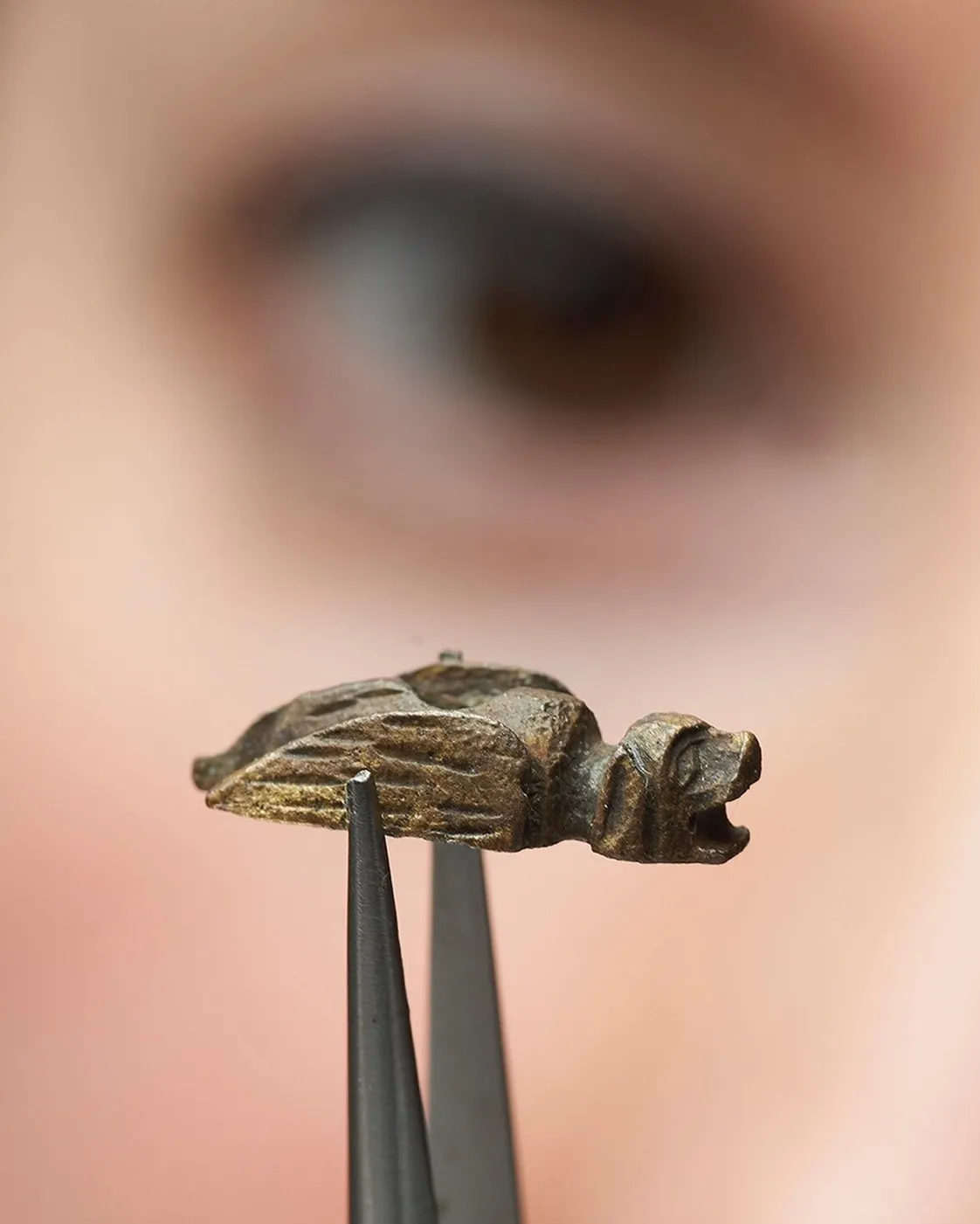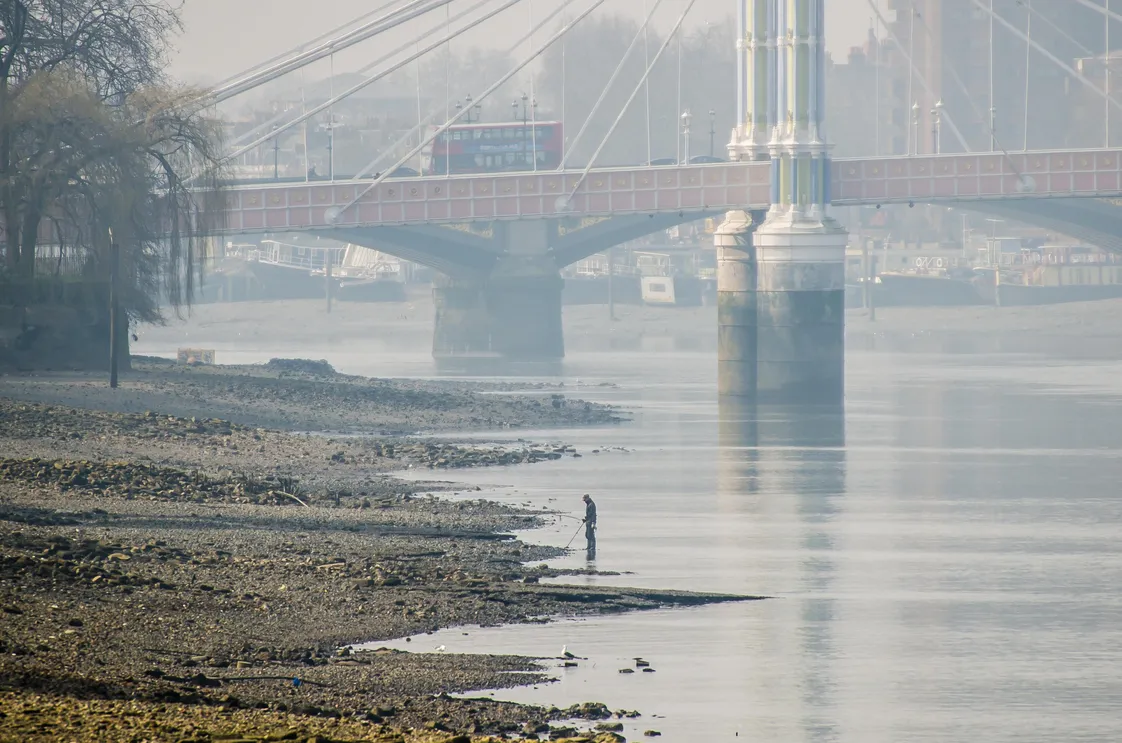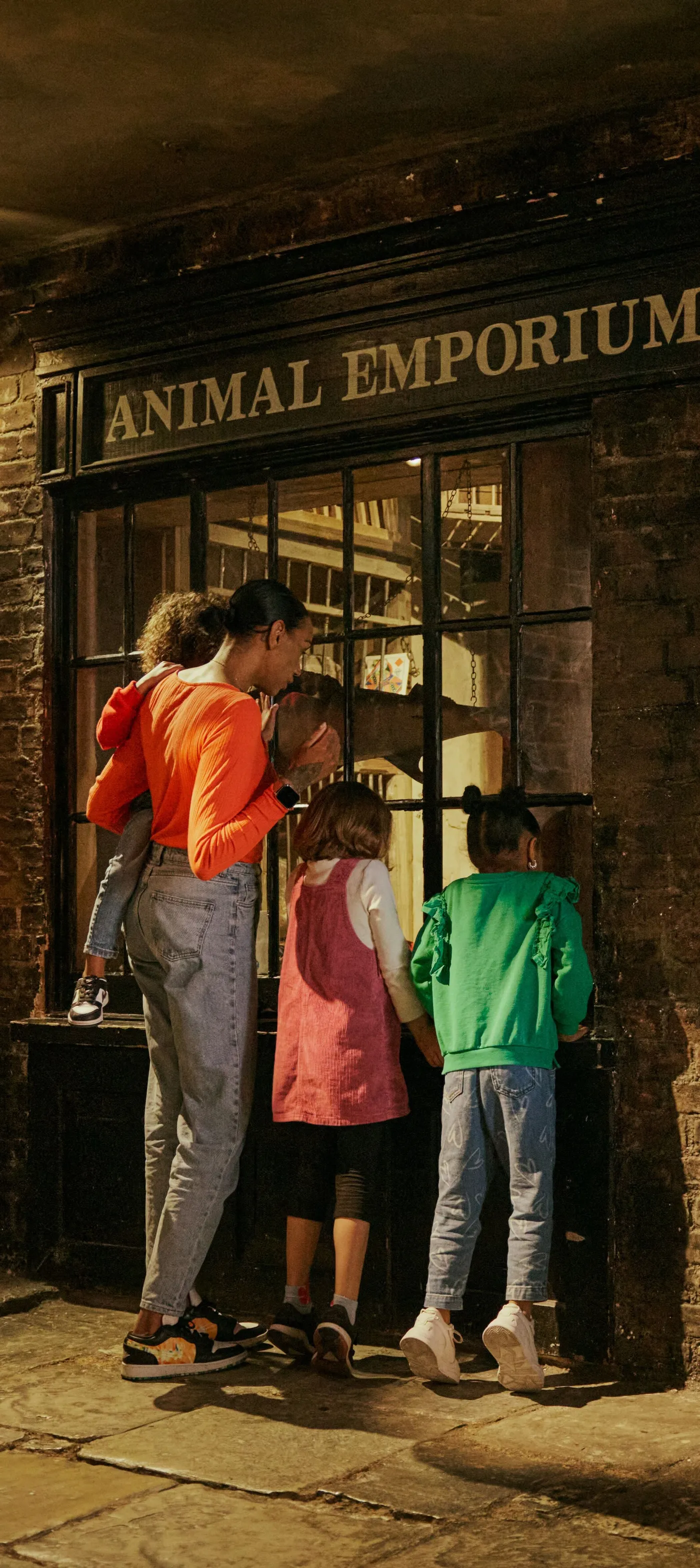21 August 2025 — By Kate Sumnall
Five surprising finds from the Thames foreshore
Thames mudlarks find spooky glass eyes, 400-year-old sundials and mystery jewellery buried in the river mud. Here are some eye-opening finds.
The tides reveal many surprises on the Thames foreshore. Mudlarks – who search the river’s muddy banks – never know what they might find.
Sometimes it’s a Roman coin or a Medieval pilgrim badge. Occasionally, the river gives up something truly remarkable. Like when two mudlarks found separate halves of a 400-year-old ivory sundial eight years apart. The Thames had kept both pieces safe until they could be reunited.
These surprising discoveries form part of London Museum’s Secrets of the Thames exhibition. Previously we gave you some of the highlights from our display, now here’s a peek into at some of the most unexpected finds from the London’s longest archaeological site.
A 1930s prosthetic eye
One of the most startling finds was when the foreshore looked back at the mudlark. This was how mudlark Lara Maiklem described spotting this glass prosthetic eye embedded in the mud. Made in the 1930s, it was designed to look as realistic as possible, sitting within the eye socket, and matching the wearer’s eye colour.
Tiny veins were painted using a hair dipped into paint and then laid onto the glass before being carefully removed. This technique creates the most life-like effect.
Records show Venetian glassmakers crafting realistic glass prosthetic eyes from the 1500s. In 1681, an ad described William Boyse of London as the only English maker of glass eyes, his work “so exact as not to be distinguished from the natural”.
Germany and France were the main centres of making prosthetic eyes. In the 1930s, production shifted to Britain. Around 4,000 a year were sent from London to ex-servicemen whose eyes were damaged in the First World War.
A ‘Tudor’ knitted cap mystery
One day, a mud-stained waterlogged knitted cap caught the eye of mudlark Alessio Checconi. Found on a stretch of the foreshore where 16th-century leather objects had recently been discovered, it closely resembled Tudor knitted caps worn by Londoners in the 1500s.
Alessio brought the cap into the museum for recording and conservation advice. Once in the lab, you can watch conservator Luisa Duarte in action as the cap began to reveal its secrets.
First, it was inside-out. Careful cleaning revealed a chequered pattern around the edge. Tudor caps were one solid colour with no patterns. The next tiny clue was a strand of wool securing a pom-pom, known as a ‘toorie’ in Scotland. This led curator Lucie Whitmore to wonder if this was a Scottish bonnet, possibly from the 1700s rather than a Tudor cap.
She started researching, but then came the final clue: a tiny scrap of elastic in it. This last piece of evidence proved the cap was made sometime after the 1940s.
Although not as old as hoped, it’s an enduring link to earlier caps and bonnets. This method of knitting has not changed much in 500 years, and some styles last a very long time.
The reunited sundial
This tiny ivory sundial fell into the Thames around 400 years ago. Over time, the two halves separated, but didn’t travel far. Peter Olivant found the first half, then eight years later Gabriel Schmitt discovered the second half in the Thames mud. The two halves are now reunited.
Sundials are used to tell the time using the sun’s location. When new, the two halves of this sundial were attached with a hinge. To tell the time, you’d open the sundial to 90 degrees, and align it to the south using the compass in the lower half. A string attached between both sides – you can still see the iron pins that held it in place – cast a shadow on the numerical side when the sun hit it and you could read the hour using the numbers engraved on the dial. Take a closer look on our Instagram video.
This sundial was made for the northern hemisphere, with numbers relating to the hours of sunlight. The maximum range runs from sunrise to sunset on the summer solstice.
The Tudor ‘ballock’ dagger
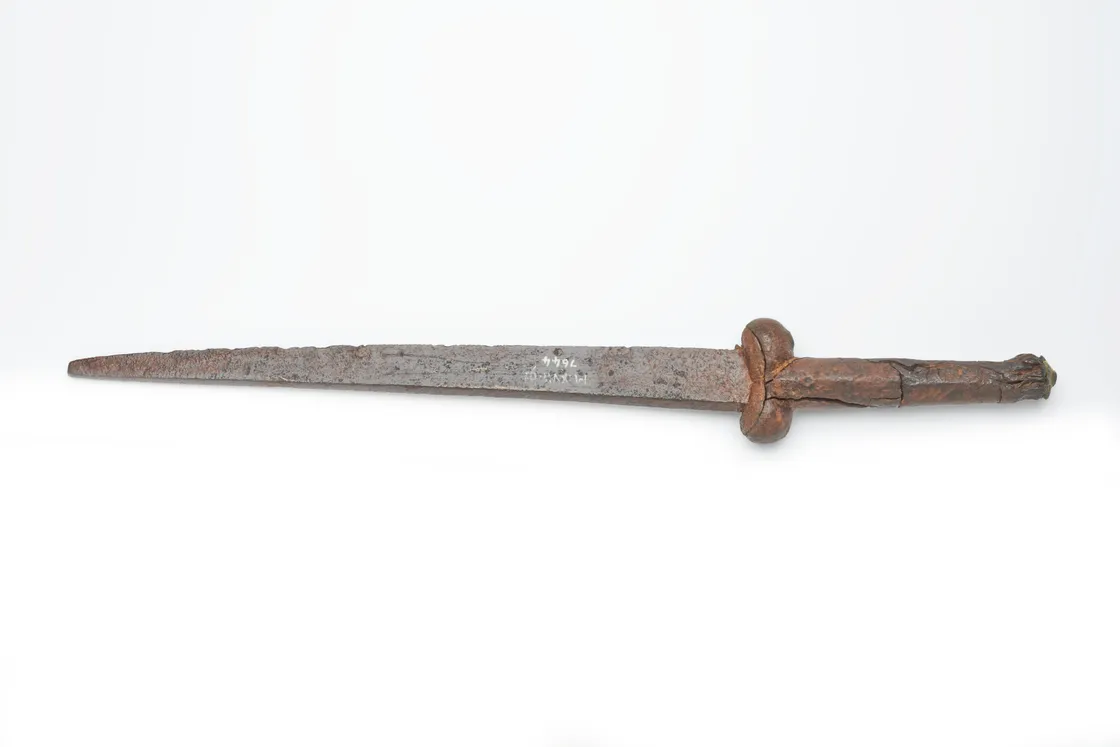
The late medieval bollock dagger.
This one’s for a good laugh. Found preserved in the Thames mud, it’s the dagger’s handle that makes it a ballsy find.
Daggers are commonly found in the Thames, reflecting how many people wore them daily. The 16th century English chronicler Raphael Holinshed wrote about how rare it was to see a man above 18 without at least a dagger. They had many different uses too from personal defence, for eating and as a useful tool.
Daggers were also fashionable with form and decoration varied according to taste. One style that started around the 1350s but became all the rage around the 1500s was the ballock dagger, also known as the bollock dagger or for the more prudish, the kidney dagger.
The handle has a very distinctive shape that was even more pronounced when worn. Unlike other daggers worn at the hip, they were worn directly in front of the man. Like in this French painting from 1410. This fashion emphasised male virility and was not subtle about it.
Pomander-ing around
This curious object was found in the 1990s by Ian Smith and Tony Pilson. Its exact function is unknown. Made from brass wire knitted to form small pouches, it’s amazingly delicate to have survived so long in the foreshore.
The style and the way it was made suggest it dates from the 1600s to 1700s. But what is it?
It was initially recorded as a necklace or a belt, known as a girdle. Portraits from this era help identify objects like. Like this image from our collection shows a person wearing a pomander hanging from a chain around her waist. Research surfaced another painting of a Venetian woman wearing a pomander with many sections, each holding different scents. Could this be a closer match for our object?
Pomanders were very popular from the late 1400s to early 1700s. They provided pleasant scents, helped protect from illness and evil spirits, and demonstrated the wealth of the wearer.
Kate Sumnall is Curator, Archaeology at London Museum and Lead Curator of Secrets of the Thames.


